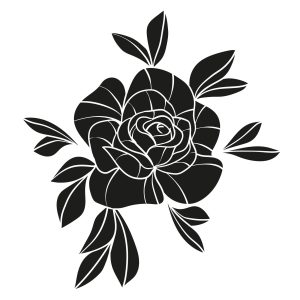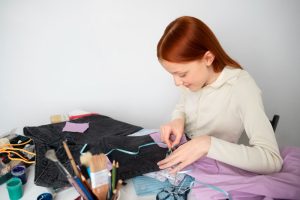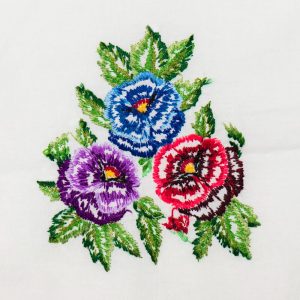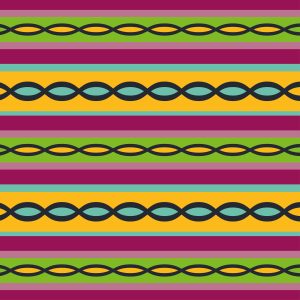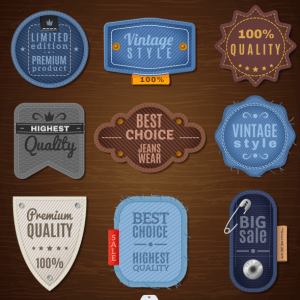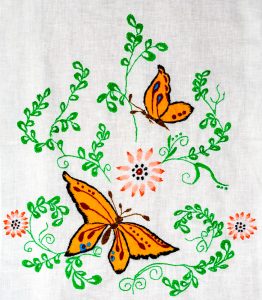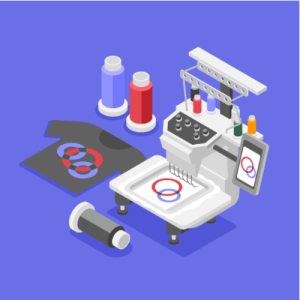Are you creating premium Christmas hoodie embroidery this holiday season? There's no need to settle for amateur-looking results! Professional design guidelines transform ordinary hoodies into high-quality products customers love and recommend. This guide will teach you essential design principles for premium hoodie embroidery based on technical standards, aesthetic excellence, and professional best practices.
Why Premium Design Guidelines Matter for Holiday Hoodies
There are a lot of reasons to follow professional embroidery standards:
- Customer satisfaction: Premium quality generates positive reviews and repeat business consistently.
- Higher pricing: Professional results justify premium prices compared to amateur work.
- Reduced remakes: Proper guidelines prevent costly production errors and customer complaints.
- Brand reputation: Quality work builds your professional reputation and industry credibility.
Top Benefits of Following Professional Design Standards
Investing in professional digitizing services for your Christmas hoodies makes sense for these reasons:
Before You Design Christmas Hoodie Embroidery
Make sure you create professional-quality designs by evaluating these factors:
1. Design Complexity Assessment
Check whether your design suits hoodie embroidery size and placement constraints.
Understanding scalable embroidery designs principles helps you plan appropriately sized artwork.
2. Artwork Quality Requirements
Get to know proper file formats and resolution standards for professional digitizing.
Learn about artwork submission to final file processes for optimal results.
3. Technical Specifications
Make sure you understand stitch density, underlay, and pull compensation requirements.
Avoiding common challenges in embroidery digitizing prevents production problems.
4. Fabric Considerations
Don't overlook how hoodie material affects embroidery settings and design execution.
Knowledge of best fabrics for digital embroidery guides proper material selection.
Premium Design Guidelines for Christmas Hoodies
Make sure you follow these professional standards for exceptional results:
Size and Placement Standards
Left chest designs: Keep dimensions between 3.5-4 inches wide for professional proportions.
Full chest designs: Maximum 10-12 inches wide to avoid seams and maintain balance.
Back designs: Large back placements work up to 14 inches depending on hoodie size.
Sleeve designs: Limit to 2-3 inches for proper visibility and wearability comfort.
Color Selection Principles
Thread quality matters: Use commercial-grade polyester threads that resist fading and breaking.
Limit color count: Keep designs under 8-10 colors for manageable production times.
Consider contrast: Ensure adequate contrast between thread colors and hoodie fabric colors.
Test combinations: Sample thread colors on actual hoodie fabric before full production.
Typography Guidelines
Minimum text height: Maintain 0.4 inches for standard fonts, 0.5 inches for script fonts.
Font selection: Choose clean, legible fonts that digitize well without excessive detail.
Spacing standards: Allow proper spacing between letters to prevent registration problems.
Avoid thin elements: Thin font strokes often break or disappear in final embroidery.
Detail and Complexity Management
Simplify intricate artwork: Remove excessive small details that won't stitch clearly.
Maintain visual impact: Balance simplification with maintaining recognizable design elements.
Consider viewing distance: Designs should read clearly from 3-5 feet away.
Test scalability: Verify designs work at intended embroidery size before production.
Technical Requirements for Premium Results
These technical specifications ensure professional hoodie embroidery quality:
Density Settings
Reduce standard density by 10-15% for fleece and soft hoodie materials.
Proper density prevents stiffness while maintaining adequate thread coverage throughout.
Understanding embroidery design issues related to density helps troubleshoot problems.
Underlay Configuration
Use center-run underlay for text and small design elements on hoodies.
Edge-run underlay works best for large fill areas and background elements.
Proper underlay stabilizes fabric and prevents design distortion during stitching.
Pull Compensation
Add 0.4-0.5mm pull compensation for standard hoodie fleece materials consistently.
Thicker fabrics may require increased compensation to prevent design shrinkage.
Test compensation settings on sample hoodies before full production runs.
Stitch Direction Strategy
Vary stitch angles by 30-45 degrees between adjacent color areas consistently.
Proper direction reduces bulk and prevents thread shadowing through layers.
Strategic angles enhance visual appeal and improve overall design appearance.
Design Styles for Premium Christmas Hoodies
Classic Holiday Themes
Traditional snowflakes, trees, and ornaments appeal to broad customer demographics.
Simple, timeless designs work well for family and corporate gift purchases.
Clean execution of classic themes demonstrates professional craftsmanship effectively.
Modern Minimalist Approaches
Contemporary geometric designs attract younger, style-conscious customers successfully.
Negative space and clean lines create sophisticated, premium aesthetic appeal.
Minimalist designs often stitch faster while maintaining high-end appearance.
Vintage and Retro Styling
Nostalgic 1950s-style graphics create emotional connections with customers.
Vintage color palettes and typography evoke warm holiday memories naturally.
Retro designs command premium pricing due to unique aesthetic appeal.
Custom Character Illustrations
Personalized character designs add unique value for special orders.
Understanding custom embroidery design digitizing ensures quality character reproduction.
Character work demonstrates advanced digitizing skills and premium quality.
Quality Control Measures
Pre-Production Verification
Review digitized files for proper density, underlay, and stitch sequencing.
Check design dimensions and placement accuracy before starting production.
Verify thread color selections match customer specifications and expectations.
Sample Testing Protocol
Always stitch test samples on actual hoodie fabric before production.
Evaluate sample quality for density, registration, and overall appearance.
Make necessary adjustments based on sample results before proceeding.
Production Monitoring
Inspect first hoodie from production run thoroughly for quality issues.
Monitor ongoing production for consistency in quality and appearance.
Address problems immediately to prevent multiple defective units.
Final Inspection Standards
Check every finished hoodie for loose threads, missed trims, and alignment.
Verify design quality meets professional standards before packaging and delivery.
Implement embroidery quality control procedures consistently.
Professional vs DIY Digitizing
When to Hire Professionals
Complex Christmas designs with multiple elements benefit from expert digitizing.
Understanding DIY vs professional digitizing helps you make informed decisions.
High-volume orders justify professional services for consistency and efficiency.
Red Flags to Avoid
Learn about red flags in cheap digitizing providers before selecting services.
Poor digitizing wastes materials and damages your professional reputation quickly.
Invest in quality services rather than risking customer dissatisfaction.
Cost vs Value Analysis
Understand quote for digitizing project factors when budgeting.
Professional digitizing pays for itself through reduced remakes and satisfied customers.
Quality services deliver consistent results that justify premium pricing.
Advanced Techniques for Premium Hoodies
3D Puff Embroidery
Learn everything you need to know about 3D puff embroidery for dimensional effects.
Raised elements add premium appeal to text and snowflake designs.
Proper foam selection and underlay ensure successful puff execution.
Appliqué Integration
Fabric appliqué adds dimension while reducing stitch counts on large areas.
Combine appliqué with embroidery for premium, layered design effects.
Proper fabric selection and preparation ensure professional appliqué results.
Custom Patch Application
Create separate embroidered badges that attach to hoodies.
Understanding custom patches backing guide ensures proper application.
Patches offer design flexibility and easy customization options.
Marketing Premium Products
Emphasize quality differences between your work and competitors' products.
Showcase close-up photos highlighting professional execution and clean details.
Price premium products appropriately to reflect superior quality and craftsmanship.
Build portfolio demonstrating consistent professional results across multiple projects.
Final Thoughts
The professional appearance and lasting quality of premium Christmas hoodie embroidery justify higher pricing and generate customer loyalty. Consider design guidelines, technical specifications, quality control measures, and professional services before you start. Following these standards ensures your embroidered hoodies stand out as premium products in competitive holiday markets.
Are you ready to start? Have fun creating beautiful premium embroidered hoodies!
Frequently Asked Questions
What makes hoodie embroidery "premium" quality?
Carefully evaluate proper digitizing, appropriate density settings, quality materials, and rigorous quality control throughout production.
Are professional digitizing services necessary for premium results?
Professional digitizing services ensure consistent premium quality that DIY approaches struggle to match reliably.
Where can I learn advanced digitizing techniques?
Explore embroidery digitizing 101 tips and tricks for comprehensive learning resources.
Is premium hoodie embroidery worth higher pricing?
Absolutely! Superior quality, professional execution, and lasting durability justify premium pricing that customers willingly pay for exceptional products.



